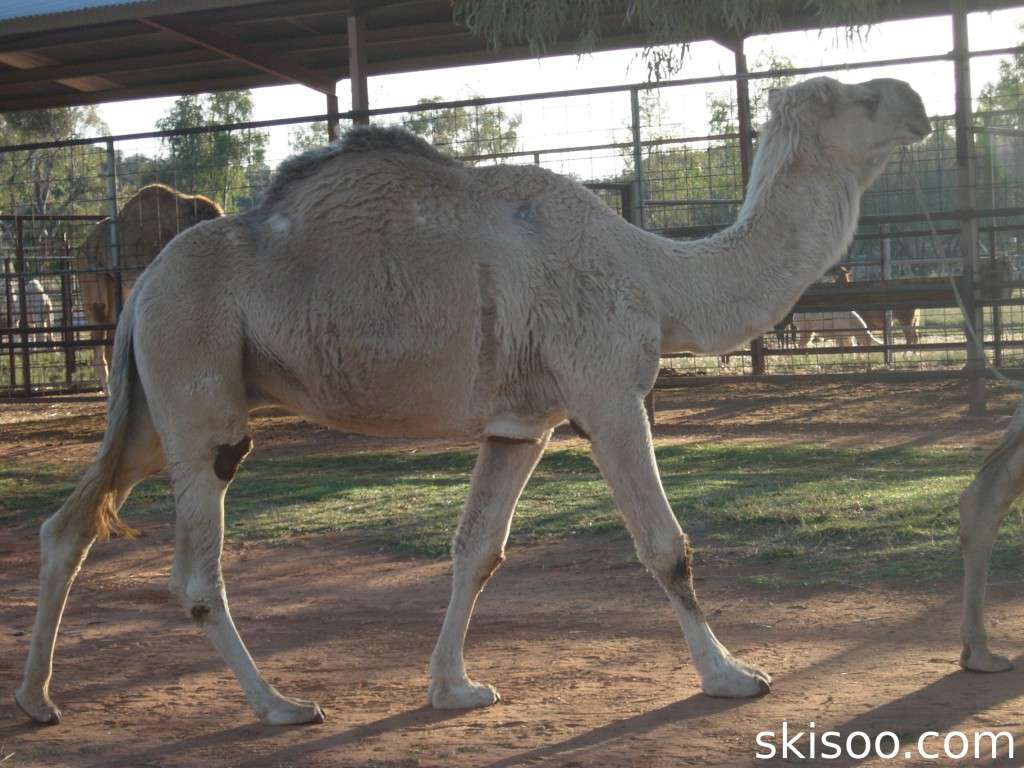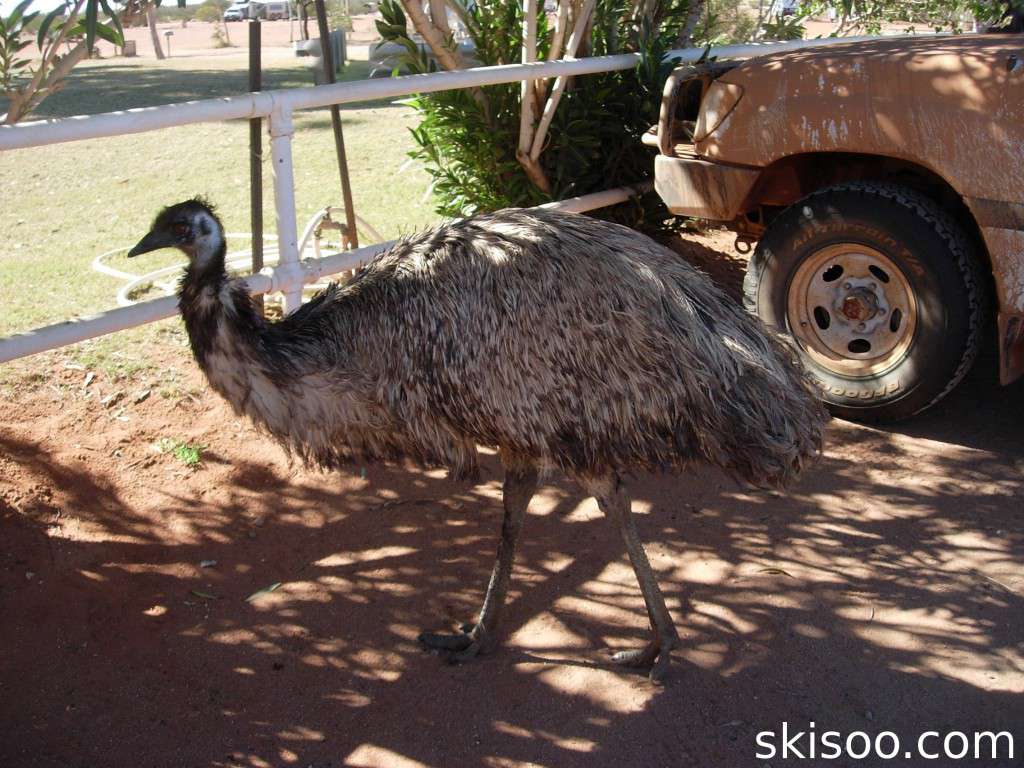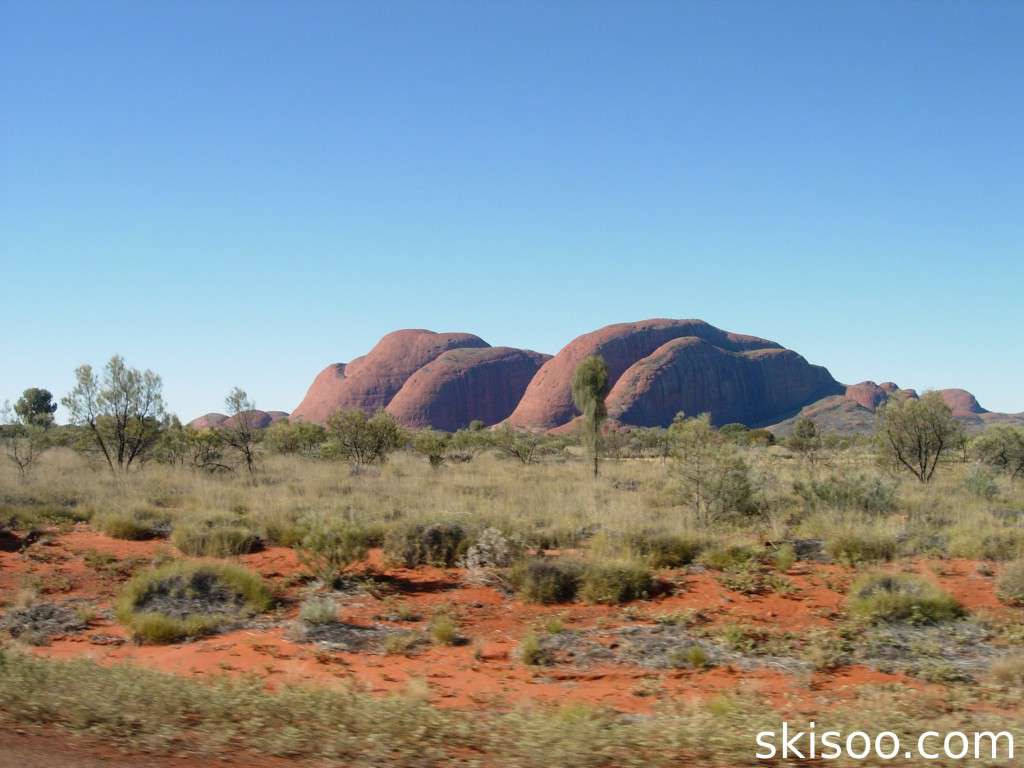After a night at Haven backpackers, we continued on the third part of the Cloud 9: Uluru and Kings Canyon. I could finally see with my own eyes the legendary Ayers Rock or Uluru for Aborigines, and to some friends back in Brisbane “You – know – it’s – just – a – rock” when i asked them.
Uluru is located more than 400 kilometers from Alice Springs, so we were back in a bus for some long hours. First step of the day, a farm for tourists called Outback Camel Farm with local animals including several camels which you could possibly ride them.
After the farm, we drove a long distance through the desert. The guide stopped the bus in the middle of nowhere and asked us to gather as much wood as possible, it seemed that the nights are cold in winter. As we can see the vegetation is relatively scarce, not easy to find wood but lot of small dead things or active termite mounds. After a while we gathered enough wood to fill the bus roof, and hoped that the night would not be so cold.
After several hours of travel we were finally beginning to see one of the famous rock formations: Kata Tjuta, the brother (or sister) of Uluru. For the history part of the tour, our guide told us that there was a certain period where there are two kinds of holes at the distance of several kilometers and the wind pushed the pebbles and sand into these holes. The stones remained in the first and sand which is lighter was went into the second. After some time (decades i think), the holes were filled. Later, erosion lowered the ground level and ultimately the filled holes became Uluru and Kata Tjuta. Uluru is like an iceberg with a huge part still underground. As can be seen in the photos, Kata Tjuta consists mainly of rocks and Uluru is composed of sandstone. Wikipedia does not tell the same story but it’s still two remarkable formations.
After the tour of Kata Tjuta, we went to watch the sunset over Uluru with a glass of Champagne.
Once night fell, we went to camp. Although it was July, it was winter in Australia, and the guide told us that the temperature could drop to 5°C during the night but fortunately the roof of our bus was full of wood. We had the choice between small huts or under the stars in swags – they are kind of like sleeping bags but with built-in mattress. I chose the second option and the night was fine, neither too cold nor too hot.







